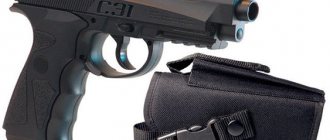The Strategic Missile Forces (RVSN) are currently a branch of the armed forces of the Russian Federation, directly subordinate to the General Staff of the Russian Armed Forces.
The Strategic Missile Forces were transformed from a type of military service into a branch of the military in accordance with the decree of the President of the Russian Federation of March 24, 2001. The commander of the Strategic Missile Forces, Lieutenant General Sergei Viktorovich Karakaev, was appointed to this position by decree of the President of the Russian Federation of June 22, 2010.
As of the beginning of 2022, the Strategic Missile Forces were allegedly armed with 320 missile systems of five different types, which were capable of carrying up to 1,181 nuclear warheads. The actual number of deployed warheads is lower, since the total number of warheads is limited by the terms of the New START Treaty.
| Number of complexes | Total warheads | |||
| Missile complex | Warheads | Locations | ||
| R-36MUTTH/R-36M2 (SS-18) | 46 | 10 | 460 | Dombarovsky, Uzhur |
| Avangard/UR-100NUTTKH (SS-19 Mod 4) | 2 | 1 | 2 | Dombarovsky |
| Poplar (SS-25) | 45 | 1 | 45 | Barnaul, Vypolzovo |
| Topol-M sh (SS-27) | 60 | 1 | 60 | Tatishchevo |
| Topol-M m (SS-27) | 18 | 1 | 18 | Teykovo |
| Yars m | 135 | 4 | 540 | Teykovo, Novosibirsk, Nizhny Tagil, Yoshkar-Ola, Irkutsk, Barnaul |
| Yars sh | 14 | 4 | 56 | Kozelsk |
| Total | 320 | up to 1181 | ||
Why is it too early to threaten Russia with hypersonic weapons?
Against the backdrop of the escalating military-political conflict between Russia and the NATO bloc, the main intrigue is what exactly the Kremlin can present to the West as a “killer” response to the failure to fulfill its ultimatum.
Since no one is waiting for our nuclear missiles in Cuba or Venezuela, patriotic fellow journalists and bloggers call hypersonic weapons, which the United States and its allies are allegedly unable to defend against, as a new “wunderwaffe.” But is this really so? They say you should only count the money you have in your pocket. Let's see what the real situation is in the Russian aviation, army and navy with hypersonic missiles. They usually talk about “Vanguard”, “Dagger” and “Zircon”.
"Vanguard"
This is the first of the “Putin missiles” that actually entered experimental combat duty. This happened in 2022 in the Orenburg missile division. The delivery of hypersonic missiles to the second regiment is expected in 2023. What is known about this type of weapon?
Avangard is a hypersonic guided warhead with a capacity of 800 kilotons to 2 megatons, launched using an UR-100N UTTH intercontinental ballistic missile.
Its main advantage is considered to be its phenomenal speed, reaching Mach 27-28, and the ability to maneuver, which makes its interception almost impossible by existing anti-missile systems. Why not a “wunderwaffe”? However, the Sun also has spots. Thus, instead of a multiple warhead with 6 parts of the UR-100N ICBM, UTTH is forced to carry only 1 Avangard unit, which reduces its effectiveness by 6 times. At the same time, the invulnerability of hypersonic weapons is still somewhat exaggerated: intercepting the Avangard may require about 50 American SM-3 interceptor missiles. This is a lot, but still a hypersonic missile cannot be called irresistible. The high temperature of the flying Avangard simplifies its detection by infrared sensors placed in orbit. If the Americans and their allies launch promising missile defense systems into space, their ability to intercept Russian missiles will increase.
"Dagger"
This is another hypersonic missile that has actually moved from the “cartoon” stage to the “hardware”. In fact, the Kinzhal is an airborne version of the Iskander OTRK missile. Unfortunately, he also inherited his shortcomings.
Initially, the domestic media themselves dubbed this missile the “aircraft carrier killer.”
On paper, everything turned out smoothly: the plane takes off with the “Dagger” on the suspension of the modernized MiG-31K fighter-interceptor, we add up the flight range of the aircraft and the missile, which gives about 3000 kilometers, the launch is carried out, and the irresistible “Dagger” hits the deck, the control room, and then the reactor of an American aircraft carrier. The existing sea-based missile defense system AUG of the US Navy is not able to intercept a hypersonic missile. Beauty! It’s just that my colleagues forgot that the Iskanders and, therefore, the Daggers are not able to hit moving, highly maneuverable targets. This is an aeroballistic missile without ARLGSN (active radar homing head). It is designed to destroy stationary targets, but a US Navy aircraft carrier from a distance of 3,000 kilometers will sink the Kinzhal only if it stands peacefully at the pier.
It should be noted that there is an acute shortage of carriers for these hypersonic missiles. So far, only a few dozen supersonic MiG-31K fighters, of which the air regiment has been formed, have been able to be converted to them. 5th generation Su-57 fighters, Tu-22M3M bombers and Tu-160 “strategists” were also mentioned as potential carriers, but things are still there. This is all we have “in our pocket” here and now.
By the way, it is not clear why to hang “Daggers” under the Su-57 stealth fighters, depriving them of their advantage in the form of stealth.
"Zircon"
A lot of copies have already been broken around these hypersonic anti-ship missiles. “Zircons” are praised to the skies as the next “aircraft carrier killers” and a threat to the US Navy. At the same time, they forget that this is just an ordinary anti-ship missile, albeit a very fast one. It’s also too early to threaten the Americans with Zircons.
Firstly
, they have not yet been accepted into service and are not mass-produced. On January 13, 2022, the State Commission only recommended that the missiles be adopted by surface ships, TASS reported:
Based on the results of state tests of the Zircon hypersonic missile from a surface carrier, the State Commission recommended its adoption by surface ships of the Russian Navy.
Submarines will have to wait until at least 2024, when test launches from submarines will resume.
Secondly
, for the reason stated above, the value of the Zircons for deterrence of the US Navy will be small due to the extremely modest number of surface carrier ships. These include, among the ships of the far sea zone in the Russian Navy, the TARKR "Admiral Nakhimov" after the completion of modernization, the Project 22350 frigates of the "Admiral Gorshkov" type in the amount of 3, which have already been built, the BDK of the Project 1155M "Marshal Shaposhnikov", recently converted into a frigate , plus the rest of the large anti-submarine ships and the Peter the Great TARKR after modernization. Not much.
Third
, the problem with target designation for Zircons is still not radically solved. Yes, the Liana satellite constellation is gradually being formed. The devices are launched to an altitude of 800-900 kilometers, which should complicate their destruction by American anti-satellite missiles; the service life of each is limited to 7 years. But let's not forget that the US Air Force has unmanned X-37B spaceplanes in orbit, capable of long-term patrols and maneuvering. Such mini-shuttles could pose a potential danger to Russian target designation satellites, disabling them to “blind” the Russian Navy. As an alternative, the Russian fleet could use carrier-based AWACS aircraft to provide target designation data to Zircons, Calibers and Onyxes, but we do not have them as a class and have declared them “unnecessary.”
What intermediate conclusions can we draw?
Disappointing. It is still too early for us to threaten the Americans and their allies with hypersonic missiles.
New Russian missiles for ground forces
When the INF Treaty was signed, it provided for the elimination of ground-based cruise and ballistic missiles with a range of 500 to 5,500 km. In accordance with it, specific stationary and mobile missile systems in the USA and USSR, each of which had many modifications, were subject to destruction. Naturally, after the elimination of the missiles specified in the treaty in both superpowers, the designers were faced with the question of coming up with ways to circumvent the formal terms of the treaty. In such conditions, similar types of sea-, underwater- and air-based weapons began to be significantly increased, as well as the development of ground-based systems with “suitable” firing parameters in terms of range.
Since much of the military industry of modern Russia still relies on Soviet developments, such missiles have been improved over 30 years and are now in service with the Russian army. The country has ground, air and sea ballistic and cruise missiles that are capable of hitting targets at a distance of several kilometers, up to 5-10 thousand km or more. Based on the RSD-10 missile launcher, liquidated under the INF Treaty, the now world-famous Topol complex was created, the minimum firing range of which is 1000 km, and the maximum is 11,000. This weapon is already considered obsolete in the Russian Federation, and it was replaced by the Yars missile systems, which can be based both in silos and on a mobile chassis, and are capable of hitting targets in a range no less than the Topol. To all this it is also worth adding the Iskander short-range missile system, which is considered one of the most formidable weapons in the world to destroy enemy air defenses and ground targets at a distance of up to 500 km (according to some reports up to 700 km), as well as the S-400 air defense system, designed to destroy any aerodynamic targets.
- RT-2PM "Topol"
- RSD-10 "Pioneer" - eliminated under the INF Treaty
- 9K720 "Iskander"
- RS-24 "Yars"
What are strategic missile forces?
The Strategic Missile Forces are the backbone of Russia's nuclear forces.
The Strategic Missile Forces troops are called upon to solve the following tasks:
Article on the topic The key to the end of the world. AiF journalist “touched” the Russian nuclear missile shield
- in peacetime, ensure nuclear deterrence against external aggression;
- in wartime, by order of the Supreme Commander-in-Chief of the Armed Forces of the Russian Federation, promptly ensure the combat use of missile systems.
As part of the modern Strategic Missile Forces group, both stationary and mobile-based combat missile systems are on combat duty.
Strategic Missile Forces units
The Strategic Missile Forces include three missile armies: the 27th Guards Missile Army (headquarters located in Vladimir), the 31st Missile Army (Orenburg), and the 33rd Guards Missile Army (Omsk). The 53rd Missile Army (Chita) was disbanded at the end of 2002.
As of the beginning of 2022, the missile armies of the Strategic Missile Forces include 11 missile divisions armed with combat missile systems.
| Number of missile systems | ||
| Missile division | Type of missile system | |
| 27th Guards Ra (Vladimir) | ||
| Tatishchevo: 60 rd (Tatishchevo-5, Svetly) | 60 | Topol-M sh (SS-27) |
| Kozelsk: 28th Guards RD | 14 | Yars sh |
| Vypolzovo: 7th Guards Rd (Ozerny, Bologoe-4) | 18 | Poplar (SS-25) |
| Teykovo: 54th Guards District (Red Sosenki) | 18 | Yars m |
| 18 | Topol-M m | |
| Yoshkar-Ola: 14 rd. | 27 | Yars m |
| 31st ra (Rostoshi, Orenburg) | ||
| Dombarovsky: 13 rd (Yasny) | 18 | R-36M2 (SS-18) |
| 2 | Vanguard (SS-19 Mod 4) | |
| Nizhny Tagil: 42 rd (Verkhnyaya Salda, Nizhny Tagil-41, Svobodny) | 27 | Yars m |
| 33rd Guards Ra (Omsk) | ||
| Uzhur: 62 rd (Uzhur-4, Solnechny) | 28 | R-36M2 (SS-18) |
| Novosibirsk: 39th Guards Rd (Novosibirsk-95, Pashino, Gvardeysky) | 27 | Yars m |
| Irkutsk: 29th Guards Rd (Green) | 27 | Yars m |
| Barnaul: 35 rd (Sibirsky-2) | 27 | Poplar (SS-25) |
| 9 | Yars m | |
RA—missile army, RD—missile division, Guards Guards
Russian air defense has over 10,000 S-300 and S-400 class missiles ready for battle
Quite recently, a seemingly ordinary event took place in our army - the transfer of another batch of S-400s. But this particular event lifted the veil of secrecy and the exact number of divisions of the newest air defense system became known.
Let's not hide it - there are now 63 S-400 divisions in Russia and these are official figures. The first thing I would like to note is the significant advantage compared to the initial data. In total, the military planned to purchase 56 divisions by 2022, and today there are already 63 of them. Moreover, their production does not even think of curtailing, since the same S-300, albeit the latest modification, has over 125 divisions, and all of them in the future should be replaced by S-400. But what is this division? The structure of the S-400 is as follows - a combat control point, several types of radars, as well as fire weapons (plus heavy equipment, support vehicles, etc.).
That’s what we’ll talk about, since by counting them the scale of the S-400 grouping of the Russian Armed Forces will be more or less clear. The division has 12 launchers of two types (their indices are not so important). Each of these launchers can use missiles of different types, which, by the way, differ in size, which allows one launcher to accommodate from 4 to 16 anti-aircraft missiles.
Launcher with 9M96 missiles.
What we have? And the fact that one S-400 division has at its disposal from 48 to 192 missiles ready for battle. It is extremely difficult to say the exact number, since ammunition can vary depending on the task and even geography. For example, during joint exercises with Serbia, launchers with a combined ammunition load of 5 missiles were used (the launcher was half discharged since it had already been fired at targets and the empty TPKs were removed).
The ability to combine missiles appeared thanks to the 9M96 missile defense system, and they, in turn, have several modifications with different ranges. Moreover, in its maximum version, this missile can reach an object at a distance of up to 150 km. By the way, it is this missile system that is actively used by the Redut naval anti-aircraft missile system, as well as the land-based S-350 Vityaz, which is a medium-range complex. It was previously thought that these interceptor missiles never reached the S-400, but, obviously, this is not the case.
S-350 "Vityaz" with 9M96 missiles.
But for fun, let’s take the minimum number of missiles, namely 4 per launcher. Most likely it will be a missile of the 48N6 family with a maximum range of 250 km, or a 40N6 missile with a range of almost 400 km - in this case this is not important. Let us remind you that the minimum division has at its disposal 48 anti-aircraft missiles. And there are 63 such divisions. The figure obtained by simple calculations is 3024, which in itself is impressive. And what if we add 9M96 to the calculation? Then you get just a colossal number of anti-missile missiles.
If we add the S-300 here, then it becomes clear why the West doesn’t like our air defense systems so much. The total number of anti-aircraft missiles will easily exceed 10,000 units.
But this is all without taking into account transport-loading vehicles, which can triple the ammunition load of a division.
Well, the icing on the cake, so to speak, are the medium and short-range anti-aircraft missile systems. We have already mentioned the S-350, but it is far from the only one. There are also “Torahs”, “Buki”, “Tunguskas”, “Shells” - it is almost impossible to calculate their total number.
So, only one Torov battery is ready to fire up to 160 missiles, excluding TZM.
Finally, it is worth noting the fact that no other country in the world has anything similar, even close. Even if we take the entire NATO bloc, including the USA.











